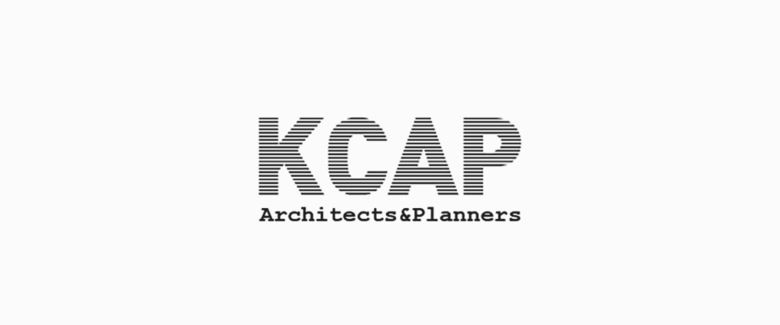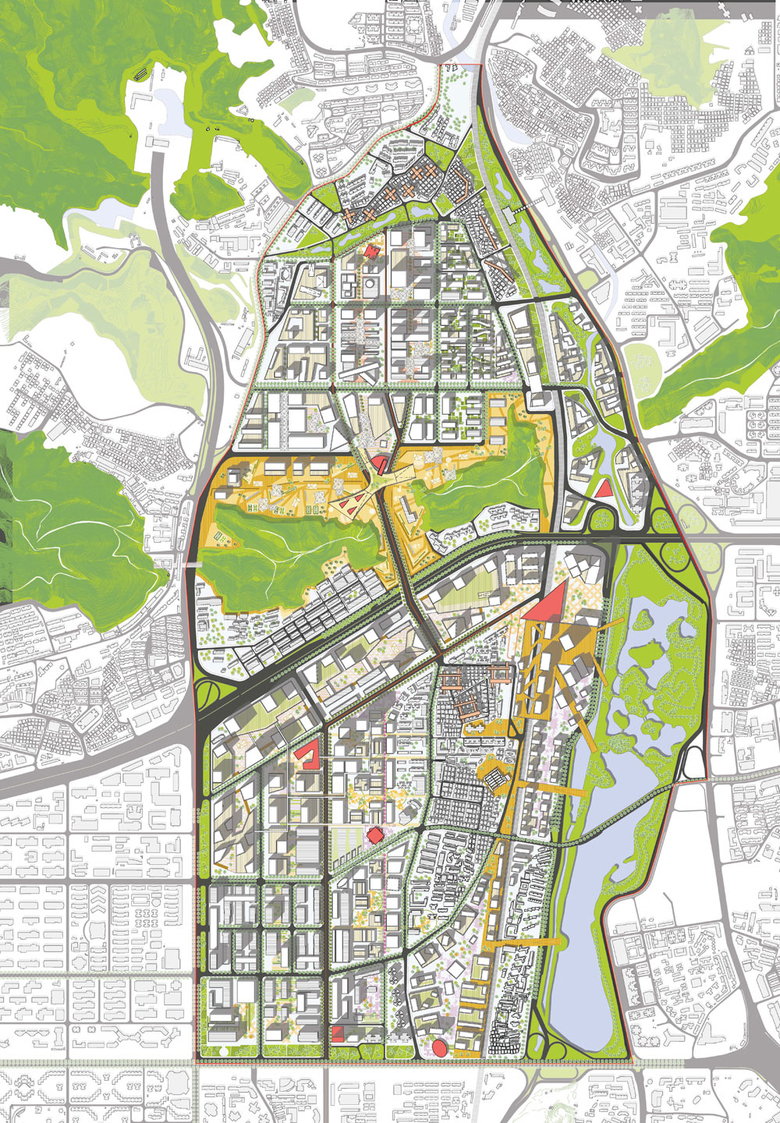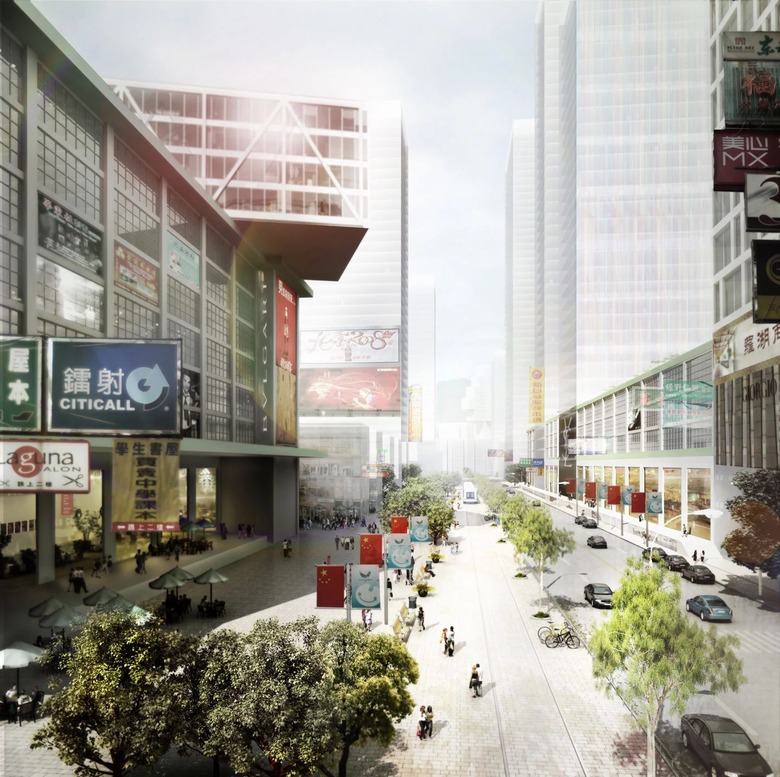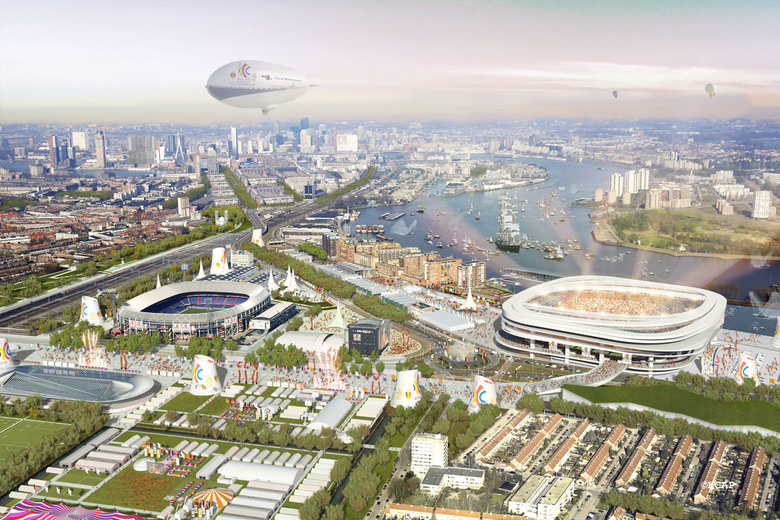Studio Visit: KCAP Architects & Planners
Jenny Keller
27. maio 2013
KCAP Architects & Planners
The Zurich office of Dutch firm KCAP Architects & Planners could hardly be in a better location: The Limmat River and the public baths are right out the front door; one is surrounded by greenery; and one is right in the middle of the city with Zurich Main Station only a 10-minute walk. World-Architects visited the office to talk with KCAP Director Ute Schneider about the differences between the Netherlands, Switzerland, and China, where their work has been growing steadily.
The train station is also one of the reasons why the Rotterdam office for urban planning and architecture opened a branch in Zurich in 2006. The founder of KCAP, Kees Christiaanse, has been a professor at the Swiss Federal Institute of Technology (ETH) since 2003. The invitations to the test planning of Science City and Stadtraum HB (City Space Main Station) – now called Europaallee (Europe Boulevard) – were the beginning of the Zurich branch. KCAP won both competitions, which was a lucky strike according to Ute Schneider, who moved from Rotterdam to Zurich back then in order to build up the Zurich office: “The Europaallee is one of the largest planning perimeters in the city of Zurich. It is the prime development area in Switzerland.”
At that time, the office focused strongly on urban planning, since Ute Schneider – who is from Southern Germany and has a strong connection to Switzerland – knew that urban planning has a niche existence in this country. It would have been more difficult to get into the architectural market in Switzerland, but KCAP work in both fields—the Zurich office now works on projects in both architecture and urban planning, dividing the time more or less equally between the two. KCAP Zurich work together with their Dutch colleagues, but they make sure that the projects are shared between the two locations according to content, geography and logistics, as well as theme and needed expertise. “Of course we also pay attention to the available cultural and linguistic knowledge, which is very relevant for our contextual approach,” Schneider explains.
Model of Science City, Zurich. Photo: KCAP
Architectonic MentalitiesUte Schneider has much to say when asked about the architectonic mentalities of the two countries. The architect grew up at the Swiss border in Waldshut, Germany. She went to the Netherlands for an exchange semester and did an internship there, returned to Germany for her diploma, and then started working in the Netherlands again, eventually for KCAP. “After I had done an exchange semester in the Netherlands and had worked there, I chose a harbor island in Amsterdam as the topic of my diploma. When I went back to Germany for this, I was confronted with the fact that I am quite German after all.” She says it was both educational and fascinating to look at one’s own cultural roots from a different perspective, and to be able to see certain aspects only through this.
Schneider mentions that there are communication differences between Switzerland and the Netherlands. This begins with the graphic representation of plans and diagrams. “During a presentation for the project Science City we were asked why the plans had to be so colorful. The model image, for instance, was shown in black and white in the Aedes publication, because the people in charge thought it was too ugly.”
PSD Tête GVA (Geneva International Airport). Visualisierung: KCAP
Of course there are also differences as far as the building production process is concerned, and there is a different level of architectural detailing, Schneider continues. In the Netherlands, people often build with a general contractor and prefabricated elements. There are different quality standards: “A social housing unit in Switzerland is built with a high equipment standard in the eyes of someone from the Netherlands.” A certain cultural understanding and an implicit understanding for, for instance, the architectural language, detailing, materialization as well as style is just different in Switzerland; it is on a very high level when compared to the rest of Europe.
There are also big differences within Switzerland, if the country is looked at in terms of different regions. The local, regional and cultural differences between the German- and the French-speaking part are undeniable. Ute Schneider saw this in various planning projects. At the moment, KCAP are working on developments around Geneva Airport (MOEU VMA) and Lausanne Main Station (Pole Gare Lausanne).
Creative Gateway Shenzhen - Urban regeneration of Sungang and Qingshuihe areas. Visualization: KCAP
Worldwide OperationsApart from Switzerland, the Netherlands and other European countries, KCAP also works on projects in China. These are supervised from Rotterdam and by KCAP Shanghai, founded in 2011. A local contact is crucial, Schneider explains. The international renown of the office results from its urban planning approach. “At the beginning, it was mostly developments of residential quarters, which is where we do not like to work so much. We prefer urban and inner-city locations, as well as mixed quarters.” With the change of customers, the volume of orders in China has grown steadily, but the locations and issues have changed.
Three Countries (CH, CN, NL), Three Projects
(Descriptions are courtesy of KCAP.)
Entrepots Renens, Lausanne, Switzerland. Drawing: KCAP
Entrepots Renens, Lausanne, CHTransformation of industrial terrain into mixed-use urban area
The urban plan for the ‘Entrepôts’ site in Renens is based on a winning competition design of 2007 and features a conversion of an industrial zone along the railway tracks into an contemporary urban plan. The vision results in an urban structure that derives from the existing structure and transforms these ones step by step.
Entrepots Renens, Lausanne, CH. Visualization: KCAP
A lively pedestrian alley forms the heart of the neighborhood and creates new diverse public spaces. The existing North-South axes between the storage sheds are converted into residential roads serving the new functions and connecting the site into the cities network. The volumes at the North and South border of the site create and protect an inner world of urban villas around the central alley. The urban villas compose a combination of semi-public and private spaces and offer each apartment either a garden on ground floor or a family garden for the upper apartments. The mix of residential, commercial and office functions combined with public functions such as a school and a community centre creates a vivid and sustainable neighborhood that also adds new qualities to the city of Renens.
Creative Gateway, Shenzhen, CN. Drawing: KCAP
Creative Gateway, Shenzhen, CNUrban regeneration of Sungang and Qingshuihe areas
The areas Sungang and Qingshuihe form part of Luohu district, one of the city centers of Shenzhen. Both have become outdated since the warehouse and storage facilities there cannot fulfill contemporary needs anymore. Despite the vanishing importance as logistic center, rich urban life has established itself at its fringes and gradually infiltrates the area. For the urban regeneration of the total 540 ha site, KCAP does not propose a finite regeneration masterplan plan, as is common practice in China, but a framework for development with a set of strategies. They set out the direction of development and resolving the most important problems and questions.
Creative Gateway, Shenzhen, CN. Visualization: KCAP
The approach is based on the acceptance of the current urban condition as a starting point. Instead of grand projects, the design introduces a series of measures and projects to be integrated in the existing fabric. With respect for the partly unused built environment, significant road and rail infrastructure, large open spaces and the topography of the site. the framework will continue the urban history of Shenzhen as the result of pragmatism succeeding over monumentality.
The plan defines, based on detailed typological studies, zones of different scale and transformation potential. In a separate study, new programs have been defined, that are based on the already established fine grain of economic networks but bring them to a higher level of profile and economic importance. Next to design, creation, management and sale of fashion, the focus will lie on industrial and furniture design as well as media and film industry. This economic profile will be complemented by high quality housing and a chain of public buildings. In its positioning the area will not only play an important role as the extension of Luohu district center, but also as a creative gateway to and from Hongkong.
Stadionpark, Rotterdam, NL. Drawing: KCAP
Stadionpark, Rotterdam, NLInternational sports campus with facilities for education, housing and public transport junction
The regional vision 'Stadionpark' foresees the development of a sports campus with additionnally space for other recreational facilities, leisure, education, housing and other programs in a period from 2009 until 2028. Within this vision, the new stadium (De Nieuwe Kuip) will be located at the river Maas and a new public transport hub will provide for good accessibility of the area. The the new stadium will form a fantastic international icon and will work as a catalyst for the project.
Stadionpark, Rotterdam, NL. Visualization: KCAP
The guiding theme for the development of Stadionpark is sports and leisure. But Stadionpark will also act as an interface between sport and society. It will be the place as well for top sport and and for recreational sport and a place where local, national and international sports life meets with economy and science. This increases the potential for both economic and socio-cultural developments and makes Stadionpark the desired driver for the improvement of the South of Rotterdam.
The vision for the sports campus presents a new spatial and programmatic concept, consisting of a network of various functions. Through careful connections to the city and other facilities, the campus is connected to the larger network of Rotterdam and and the South of Rotterdam, as well as to the Dutch 'Randstad'.
KCAP is based in Rotterdam and has two branch offices in Zurich (CH) and Shanghai (CN). KCAP Zurich was established in 2006 after winning two international design competitions in Zurich. Director Ute Schneider manages the Zurich office. KCAP Shanghai, established in early 2011, supports KCAP’s growing portfolio in China.
KCAP employs a staff of 75 professionals including architects, urban designers, landscape architects and urban planners of about 20 nationalities.
Artigos relacionados
-
Will Berlin be Beautiful Tomorrow?
1 week ago
-
Other Ways of Making Books
1 month ago
-
The Vessel Reopens with Safety Netting
1 month ago









